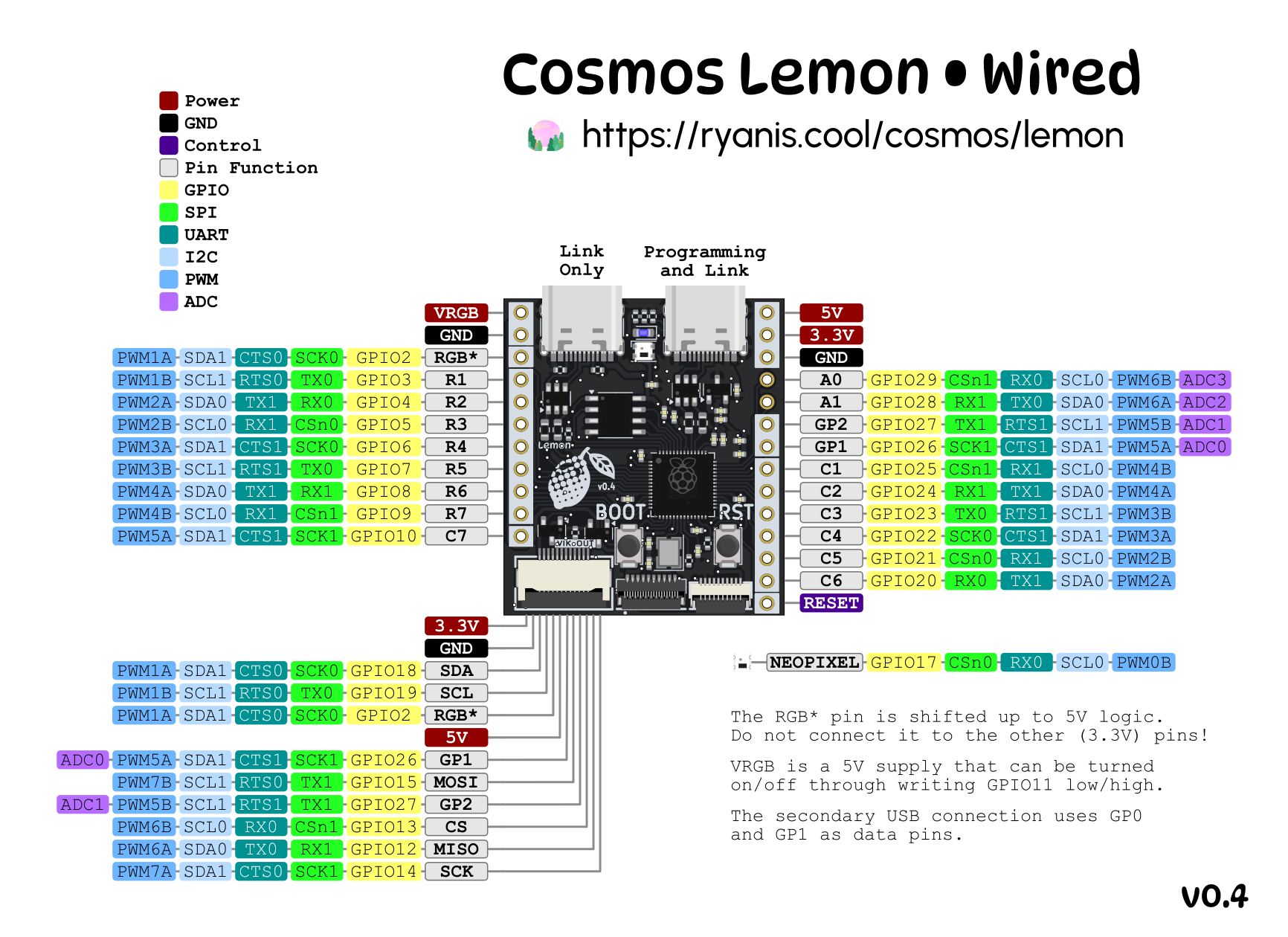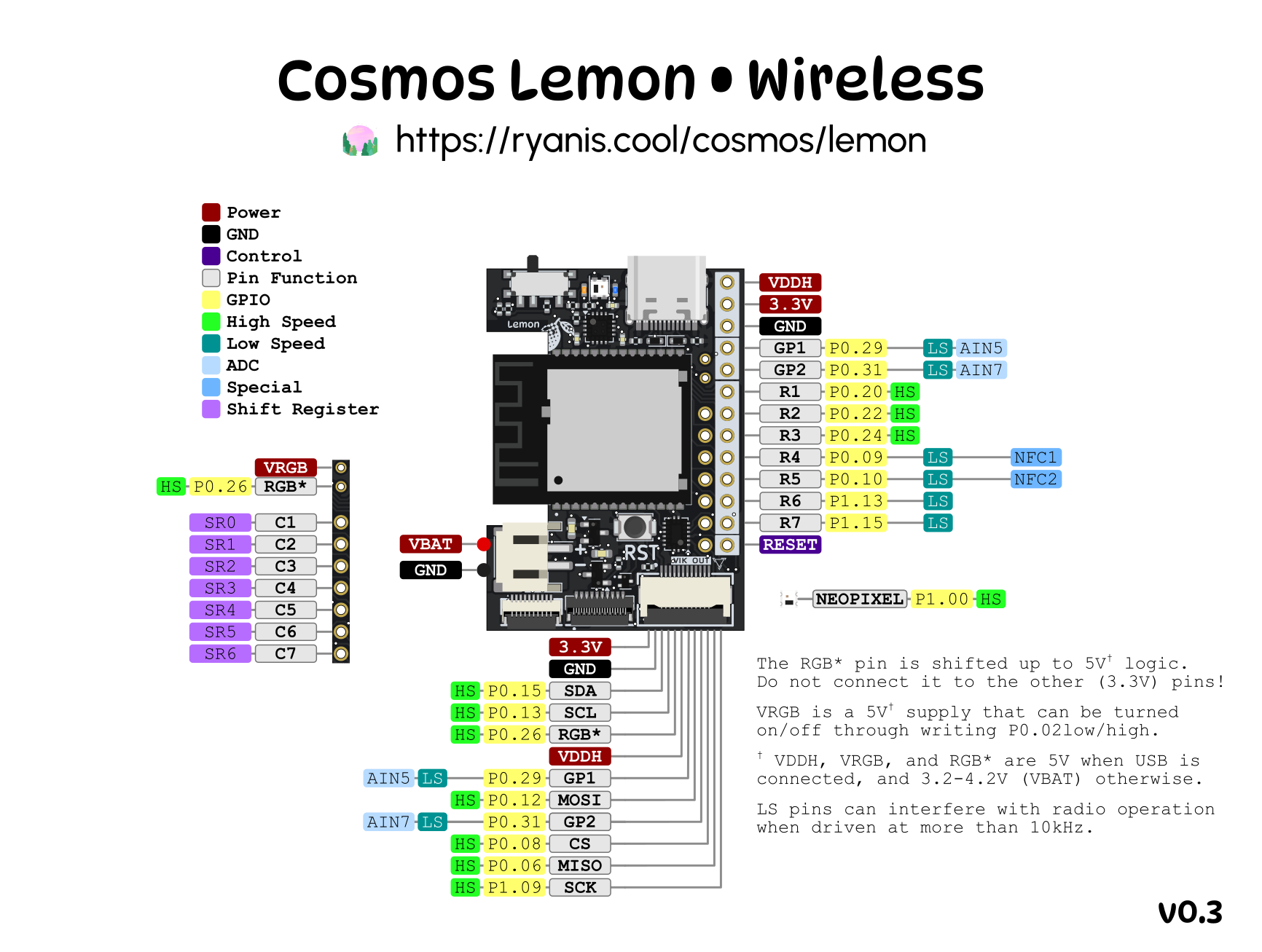Project
Peasy
of Nifty

Easy Connectivity
Build a keyboard in no time! The Lemon has enough connectors to let you build your keyboard without soldering a single wire. The two small FPC connectors let you connect Pumpkin Patch PCBs or TheBigSkree's fully flexible PCBs. Any VIK-compatible trackballs, displays, and joysticks are connected through the larger FPC connector. Both microcontrollers also break out power and data pins to breadboard-spaced through-hole pads.
Low Power without Sacrifices
Both Lemons are optimized to minimize power draw when idle. But there's more: for those who can't give up their RGB LEDs, they also include a relay to turn off LED power. Otherwise, the addressable RGB LEDs consume 1mA/LED when off. The Lemons also include a 5V level shifter.
(Wired) A Safer Way to Split
The Wired Lemon comes with two USB-C connectors, one of which you can use to connect both halves of your split keyboard. Unlike TRRS, it is safe to plug/unplug your splits when connected to your PC.
(Wireless) Everything You Asked For
An integrated power on/off switch and a JST PH battery connector keep your keyboard internals tidy. You can also enable a fast charging (500mA) mode.
Compatible with all the Firmwares
The Lemon Wired supports QMK and KMK, and the Lemon Wireless supports ZMK. If you decide to repurpose the microcontrollers for other projects, you can reprogram both with the Arduino IDE.
Specs
| Lemon • Wired | Lemon • Wireless | |
|---|---|---|
| PCB Size | 31.9 x 36mm (1.3 x 1.4in) | 29.9 x 42mm (1.2 x 1.7in) |
| Microcontroller | Raspberry Pi RP2040 | Nordic nRF52840 |
| Flash | 16 MB | 1 MB |
| Memory | 264 KB | 256 KB |
| Bootloader | UF2 | UF2 |
| Connectivity | 2 USB-C Ports | USB-C, Bluetooth 5.4 including BLE |
| Accessible I/O | 25 Pins | 23 Pins (7 are output only) |
| Internal I/O | 4 Pins (USB-C, Pwr relay, LED) | 2 Pins (Pwr relay, LED) |
| Supported Batteries | None | Single-Cell LiPo |
Pinouts

Making your own keyboard(s) with Cosmos is a wonderful way to make your own improvements to a gadget you use every day, without needing to first master product design, CAD, or ergonomics. Instead, you acquire these skills along the way, diving as deep (or as shallow) as you like.
Likewise, you shouldn't need to be a skilled electrical engineer or computer scientist to add electronics to your keyboard and program it. You may do a little soldering and familarize yourself with the firmware as you tweak it, but Cosmos has developed the Pumpkin Patch PCBs and Lemon Microcontrollers to ensure that–even if you blunder, even if your hands shake when soldering–you're not far away from being able to type on your new keyboard.
Soldering and programming keyboards can be notoriously opaque; sometimes things fail to work with no clear culprit. The Pumpkin PCBs give you a grid of hotswap sockets and LEDs already connected together and assured to work, while the Lemon Microcontrollers are the only hardware for which Cosmos can autogenerate firmware. Altogether, irregardless of your background, you have the power to shape your keyboard to your desires.
Ready to learn how it works?
Then read the documentation below (or visit the Pumpkin PCB page)Documentation
Documentation for both Microcontrollers lives on the main Cosmos documentation: [Wired Docs] [Wireless Docs].
They're also open source! You can find schematics (both PDF and KiCAD), PCB layouts, and more at the Cosmos Keyboard PCBs repository.

